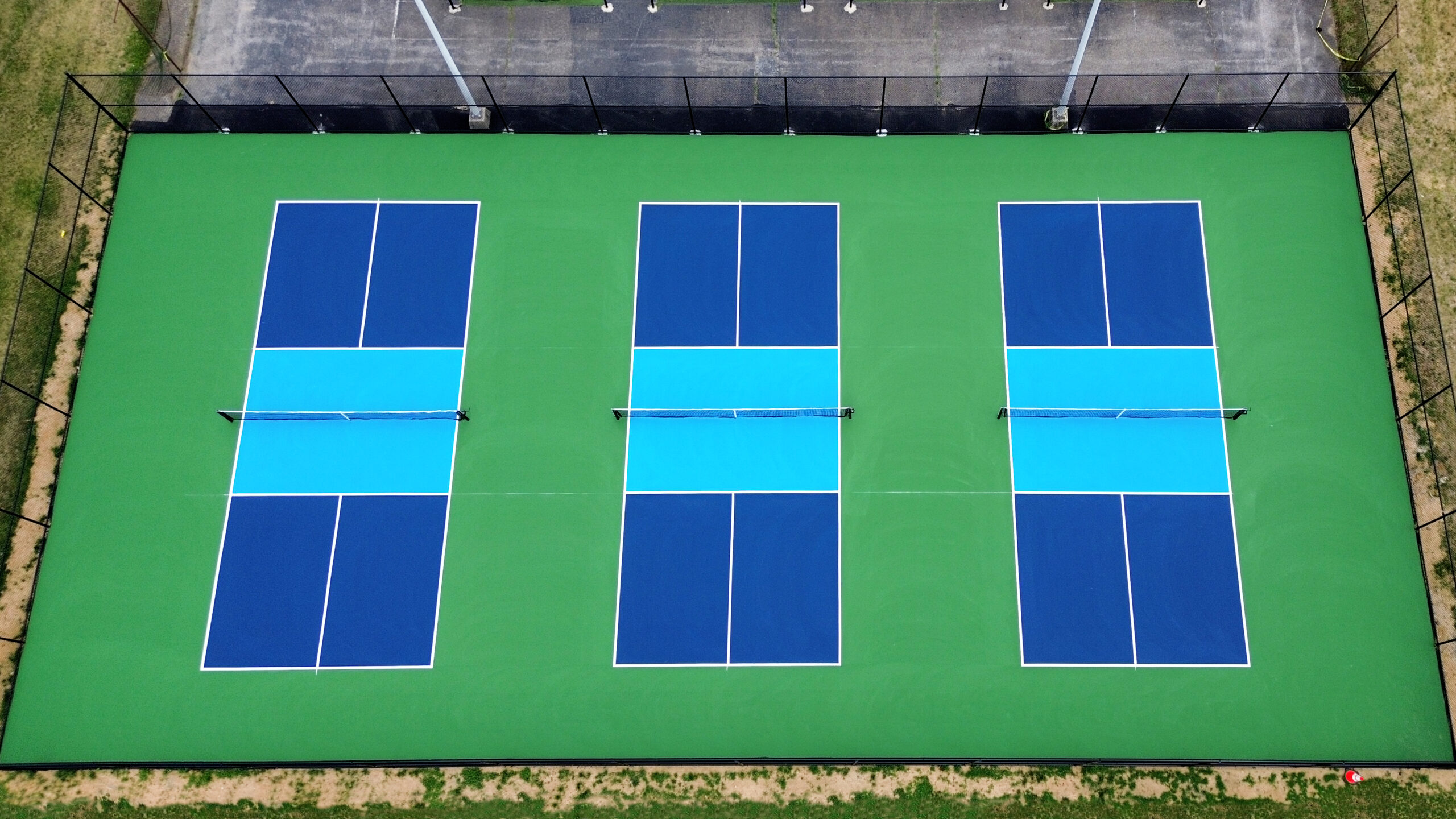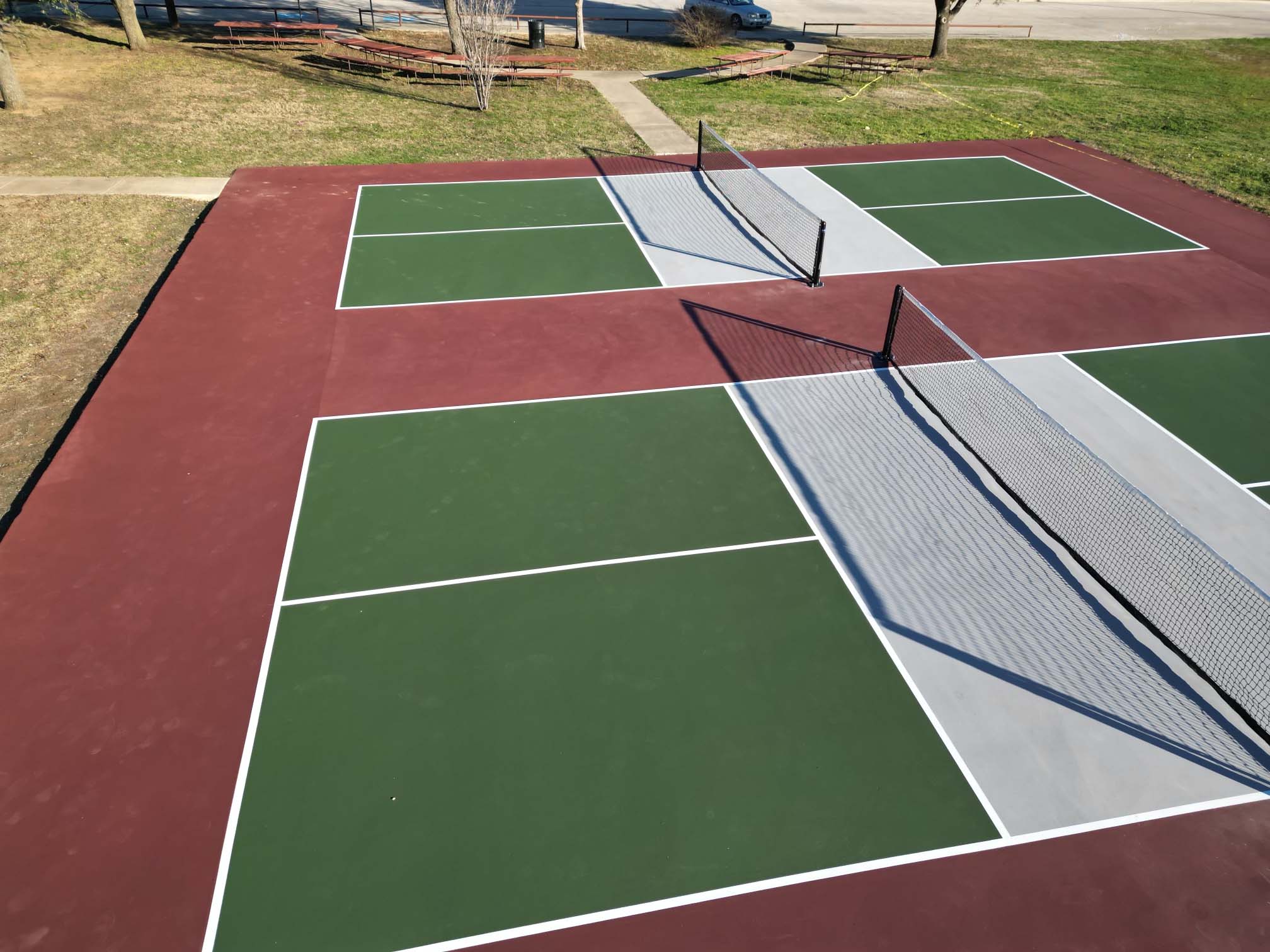Professional Pickleball Court Construction-- From Style to Installation
Sustainable Practices in Pickleball Court Building And Construction You Should Know
As the appeal of pickleball continues to climb, so as well does the requirement for sustainable methods in court construction. The impact of these techniques extends much beyond the court itself.
Selecting Eco-Friendly Products
Selecting environment-friendly products is a critical action in the building of lasting pickleball courts. The selection of sustainable materials not just reduces environmental effect yet also improves the long life and efficiency of the court. Trick products consist of reused rubber for the surface area, which supplies exceptional resilience and shock absorption while diverting waste from landfills.
Furthermore, using locally sourced materials minimizes transportation discharges and sustains local economies. Pickleball court construction. Utilizing native hardwoods for fencing and seating can supply a sustainable aesthetic while making certain durability versus the aspects.
Incorporating permeable materials for court structures can better add to sustainability by enabling for all-natural water drainage and lowering drainage. These choices not only secure neighborhood environments yet also advertise much healthier play atmospheres.
Reliable Drainage Solutions
While the choice of green materials is important, implementing reliable drainage remedies is just as important for maintaining lasting pickleball courts. Correct water drainage not only shields the court surface from water damage but additionally lessens erosion and overflow, advertising ecological honesty.
Effective water drainage systems can consist of absorptive paving, which allows water to infiltrate the ground rather than pooling externally. This lowers the chance of standing water, which can lead to mold and various other maintenance problems. Furthermore, including strategically put drain networks and swales can route excess water far from the court location, ensuring a dry playing surface area and protecting against dirt disintegration.
Using native plant life in the landscaping around the courts can better enhance drain by soaking up excess water and lowering overflow. These plants call for less irrigation and promote biodiversity, lining up with lasting techniques.
Additionally, it is critical to on a regular basis preserve the water drainage system to guarantee its lasting effectiveness. This consists of clearing up debris and tracking for blockages. By prioritizing efficient drain services, pickleball court contractors can considerably add to the sustainability and long life of the center, eventually profiting both players and the atmosphere.
Energy-Efficient Lighting Options
As the demand for pickleball remains to expand, incorporating energy-efficient lights alternatives right into court style has come to be significantly essential for sustainability. Conventional lighting systems commonly consume too much power, adding to higher operational costs and ecological effect. For that reason, embracing modern-day, energy-efficient technologies is vital for both brand-new buildings and restorations.
LED (Light Emitting Diode) illumination attracts attention as a premier selection because of its durability and power financial savings (Pickleball court construction). Compared to conventional lights, LEDs make use of roughly 75% less energy and can last up to 25 times much longer, substantially decreasing maintenance prices. Moreover, the directional nature of LED lighting lessens light air pollution, guaranteeing that illumination is concentrated on the court rather than bordering locations.

Lasting Surface Area Alternatives
Discovering sustainable surface options for pickleball courts has obtained traction among players and contractors alike. The emphasis on eco-friendly materials not just lines up with the growing ecological understanding yet additionally boosts the efficiency and sturdiness of the courts.
This product offers outstanding shock absorption, decreasing the danger of injuries for gamers while advertising sustainability. These tiles are very easy to set up and change, and their adaptability permits for various court arrangements.
Natural turf courts are also becoming a lasting choice, advertising biodiversity and this contact form minimizing the warmth island effect. check my source Nevertheless, they need regular maintenance and water, which might not align with all sustainability goals.

Water Conservation Methods

One more efficient strategy entails the installation of rainwater harvesting systems. These systems keep and gather rain for usage in preserving court surfaces and landscaping. This strategy not only conserves drinkable water yet additionally decreases reliance on municipal sources.
Additionally, utilizing drought-resistant landscape design around the courts is essential. Indigenous plants call for less water and are better adjusted to local environment conditions, therefore reducing overall water intake. Additionally, using reliable watering systems, such as drip irrigation, ensures that water is delivered directly to plant roots, reducing evaporation and waste.
Conclusion
Incorporating lasting methods in pickleball court building substantially adds to ecological conservation and source performance. Making use of green materials, implementing effective water drainage solutions, and embracing energy-efficient illumination options can substantially reduce ecological effect. Exploring lasting surface area alternatives and using water conservation methods enhance the overall sustainability of these leisure facilities. By prioritizing these practices, the building of pickleball courts can straighten with broader ecological goals while promoting long life and functionality within neighborhoods.
As the popularity of pickleball proceeds to rise, so also does the demand for lasting techniques in court construction.Selecting environmentally friendly materials is a critical action in the building of sustainable pickleball courts. By focusing on energy-efficient lighting choices, site link pickleball court fitters can add to a much more sustainable future while meeting the requirements of stakeholders and players alike.Incorporating lasting surface options not only boosts the performance of pickleball courts but additionally leads the way for applying efficient water conservation techniques.Integrating lasting methods in pickleball court construction significantly adds to ecological preservation and source performance.